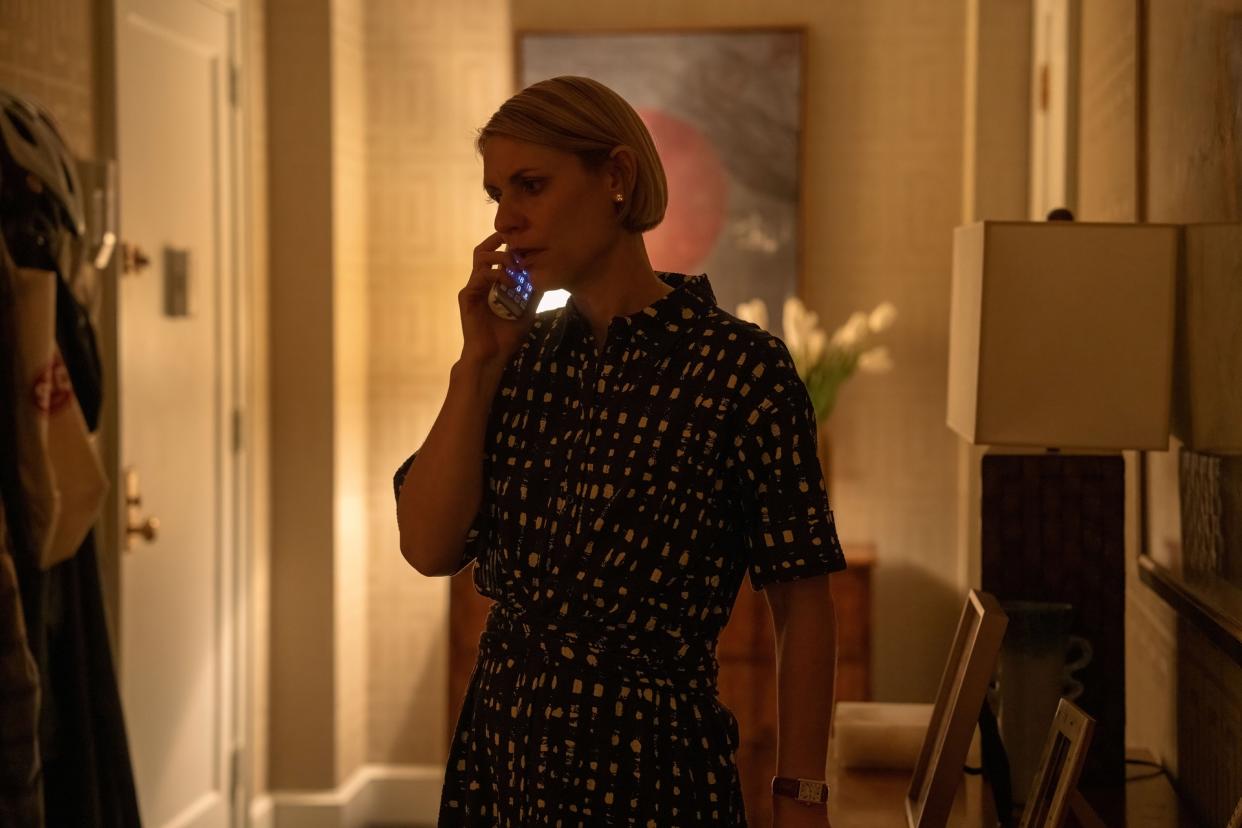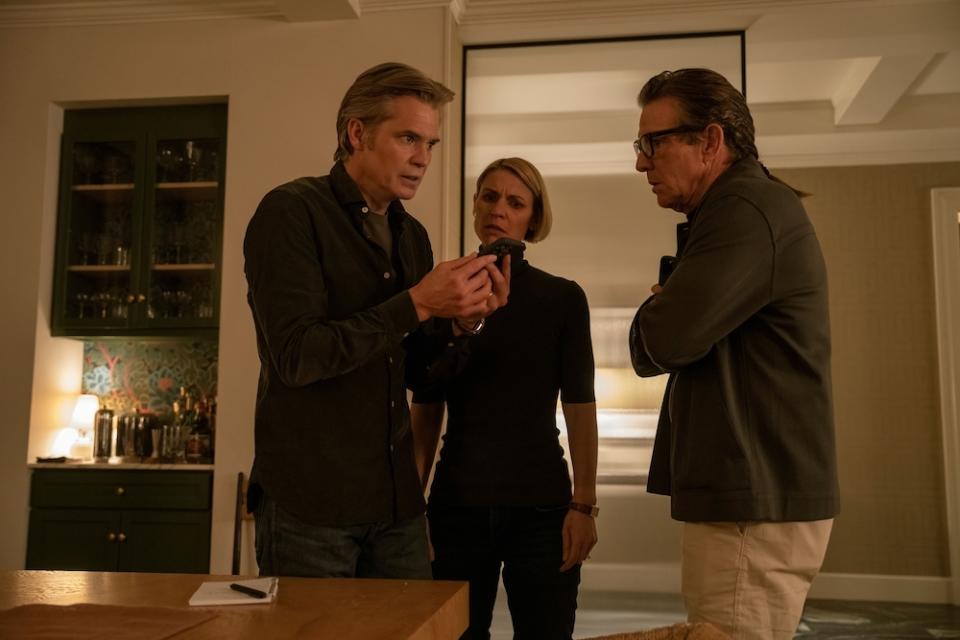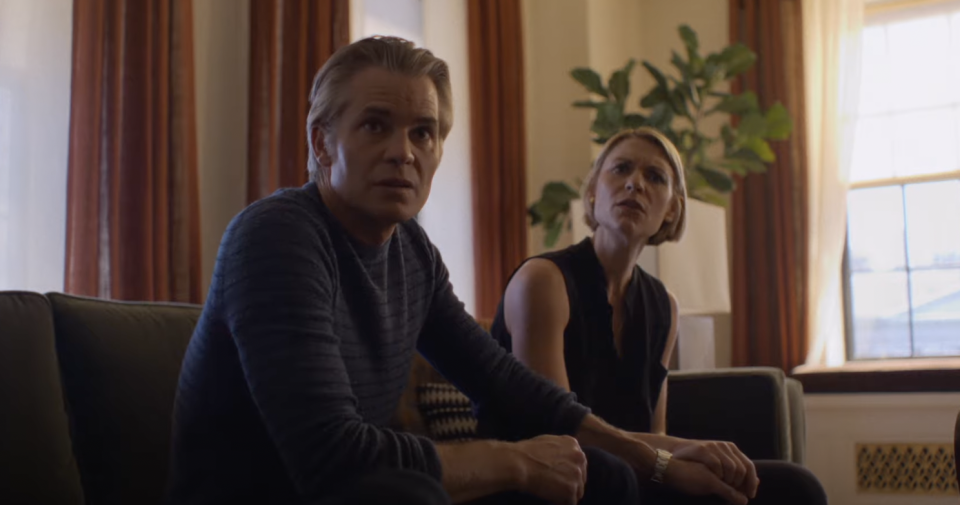Steven Soderbergh Knew He Had to Keep Things Simple Filming ‘Full Circle’

- Oops!Something went wrong.Please try again later.
- Oops!Something went wrong.Please try again later.
- Oops!Something went wrong.Please try again later.
“Full Circle” came to an exceptionally satisfying end July 27, as director Steven Soderbergh and writer Ed Solomon elegantly pulled together the varied storylines and themes that comprised its sprawling, penetrating narrative while leaving just enough unanswered questions to tantalize the viewer. Soderbergh looked back on the making of the Max limited series in a wide-ranging roundtable interview that touched on a number of subjects both directly and indirectly related to “Full Circle,” from why he likes to shoot quickly to what he learned from the New York cop movies of the 1970s. Here are some highlights from the conversation.
On the influence of William Friedkin and Sidney Lumet.
More from IndieWire
While preparing for “Full Circle,” Soderbergh looked at William Friedkin’s “The French Connection” and Sidney Lumet cop movies like “Serpico.” “There can be something compelling and arresting about an approach that’s really direct and doesn’t have a lot of filigree in it,” he said. “I was trying to be as simple as possible because I was aware that the storyline was not simple. It felt like it was not the time for me to get really tricky. So I think the filmmaking in this is more blunt than anything I’ve done in a while, even ‘The Knick.’ I wanted it to be a little rough — precise, but still kind of funky.”

On the long takes and minimal coverage of ‘Full Circle’
One of the hallmarks of the visual style in “Full Circle” is the show’s tendency toward long takes that present the action at a distance without punching in excessively for close-ups. According to Soderbergh, those long, intricately choreographed takes have a practical component as well as a desirable emotional effect: They allow him to work faster. “The thing that takes time when you have a lot of work to do in a day is unnecessary coverage,” he said. “If you can rehearse and block and stage something and know where the cuts are coming before you’ve shot it and you don’t capture any redundant material and you’re not doing 20 of 30 takes of stuff, you can move pretty quickly.
“I like to move quickly, not just because it keeps the actors hot, but I don’t like to burn my crews out. I’d say we average about nine-and-a-half, 10-hour shoot days, and part of that is because people just stay fresh. The other is making sure that I have enough time after the shoot is over to get all the material, cut that day’s footage together, and know whether there’s something we need to go back and do again as quickly as possible. That means sometimes at nine or 10 at night calling the first AD and saying, ‘Hey, you need to put on the call sheet tomorrow that I want to redo these two shots that we did today.’ That happens a couple of times a week at least.
“It’s also an awareness that if I say we’re shooting a 10-hour day, that means the shooting call was eight and we wrapped at six. I’m very aware that there are people there many hours before shooting call. And there will be people there many hours after shooting call, and their day is not a 10-hour day, their day is more like a 14- or 15-hour day, even on a so-called ‘short’ day. So in the aid of not grinding people to dust, I try to be very cognizant of how long things are taking and how long the days are.”
On branching narratives.
Soderbergh and Solomon originally intended “Full Circle” to be a branching narrative like their HBO series “Mosaic,” which gave viewers the option to choose different outcomes for the story via the app. Ultimately they abandoned that approach, and Soderbergh has come to question whether there’s any real place for branching narratives in general. “In a primal sense, around the campfire or a dinner table, if somebody pulls the attention of the group to tell a story, the people in that group are expecting and wanting to hear a story that resolves itself. They don’t want to hear somebody tell a story at a dinner table in which they go one way, and then they back up and go, ‘Or it could go this way.’ That’s not what you want. I think there’s a very strong impulse for people to want to be told a story like, ‘You’re the storyteller. Tell me a story. Don’t make me do the work. That is your work.’ That’s what I’m beginning to think. So it’s a real question whether or not I would return to that format without an idea that I feel can only be executed properly in that format.”
On location scouting.
When Soderbergh announced in 2011 that he was retiring — a plan that, thankfully for his fans, didn’t stick — he said one reason was that he was tired of getting in the van for grueling location scouts. “I still hate it, but there’s no way around it,” he said. “I mean, I’ve experimented with some of the technology that’s available. When you send a scout out, they can wear this thing that’s essentially like one of the Google Street views and walk through a space and upload it for me, and it’s a 360-degree capture that I can pan, tilt, do everything and see it, and that’s helpful. But I know from experience you have to go. Being there is just different. What often happens is, no matter how exhaustive your location scout is, you’ll roll up to a location and be looking around and then you’ll see something or find something near there that you hadn’t seen before that you like better. That’s why you’ve always got to get in the van, because you need to see not only what they photographed for you or were showing you, but what’s around that they didn’t show you that may be better or just spark a different approach to the piece.”
On selecting the right financing/distribution model
At the same time that “Full Circle” was unfolding on Max, Soderbergh dropped the low-budget series “Command Z” on his website. When asked how he chooses the right outlet for each particular project, Soderbergh said, “There’s a process that I go through as an idea begins to emerge. One of the first questions that you’re asking yourself is, is it a movie idea or is it a series? Then once you’ve figured out that, what kind of resources do we need to execute this properly? And given what the piece itself is, who’s the most likely buyer? Then you sort of have to make a decision about, well, in order to make it attractive to a buyer, what state does it need to be in? Is it a high-concept thing where they hear two sentences and they go, ‘Got it. We like that.’ Or do you need to really develop it? Ed wrote ‘Full Circle’ on spec, so that makes my life easier because we just turn in the scripts and go, ‘This is what we want to do and this is the number.’ That makes everything a little more aerodynamic.
“The timing, the culture, makes a difference. If you’re going out with a show or a movie about a certain subject, what’s happening in the culture has a huge impact on whether or not people are excited by that. Everybody’s had the experience of developing a project on their own without telling a lot of people and you take it out and everybody you go to is like, ‘Yeah, we’re actually shooting something just like that right now.’ That happens a lot. I watch stuff, so I have my own sense…somebody may pitch me an idea and I’ll feel like, ‘Yeah, I think a year from now, nobody’s gonna care about that. That’s an interesting idea if you could drop it tomorrow.’ So you’re trying to prognosticate a little bit just based on your sense of how the culture cycles ideas through. But you never know. I’ve had stuff work better than I thought and I’ve had stuff work worse than I thought.”

On people in rooms talking.
Both “Full Circle” and “Command Z” are heavy on character-driven dialogue scenes, something that Soderbergh has been drawn to since the beginning of his career. “The first film I made is really a series of scenes with two people in a room,” he said. “That doesn’t scare me. I’m not afraid that it’ll be boring. Philosophically, I feel that’s how everything significant that’s happened in the world began: with two people in a room. I’m always excited by the possibilities of that. My focus is less on how we shoot that, because I feel like that becomes pretty apparent. But do we have something worth shooting? If I don’t feel like we have something worth shooting, then I send everybody away and it’s just the cast and the writer and I go, ‘OK, we’ve got to figure out why this doesn’t feel alive. What’s wrong?’ And you just start going through that process.
“The scene in which Louis [Gerald Jones] comes to the apartment to steal the painting was rethought on set at a certain point. In the original script, it turned into a fight in the bedroom and the gun was under the bed and the mattress flipped over and pushed her against the window and it looked like the window was gonna crack. There was no exchange between the two of them, and this was an example of when you’ve been shooting for a while, I said to Ed, ‘The scene that used to be on paper doesn’t feel like what we’re making now. I think we’re making a different show now and we need to look at this differently.’
“And we sat there on set with the cast and rebuilt the second half of that scene. We spent an hour, hour and a half writing and rehearsing what you see in the show now, which is he can’t get the painting off the wall. He runs back to find her, she’s got the gun, she confronts him and he explains how he got there and why he’s there. And you see her realize, ‘This is all my fucking fault, this whole thing, this kid is in this apartment because of the shit I did 20 years ago. This is my fault.’ The show needed that moment and it just didn’t exist. So that was an example of, yeah, I like to move quick until I bump on something and go, ‘We’ve got to rethink this. Let’s stay here until it’s better.’ That’s the kind of fluidity that I like to pursue.”
“Full Circle” is streaming in its entirety on Max.
Best of IndieWire
Where to Watch This Week's New Movies, from 'Talk to Me' to 'Haunted Mansion'
Quentin Tarantino's Unmade Movies: 21 Projects the Filmmaker Almost Directed
Sign up for Indiewire's Newsletter. For the latest news, follow us on Facebook, Twitter, and Instagram.

